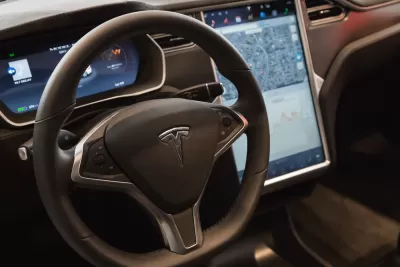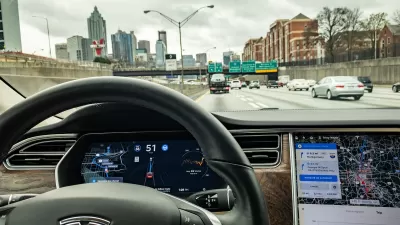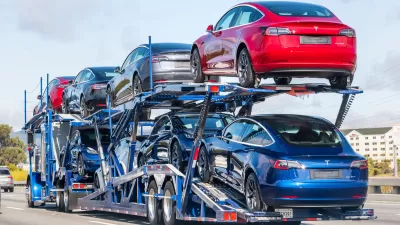While dozens of companies are following state-mandated regulations for autonomous vehicle testing, Tesla has managed to avoid the same rules. It's time for regulators to step in, according to the Los Angeles Times Editorial Board.

An editorial in the Los Angeles Times calls on state and federal authorities to step in to regulate Tesla's 'self-driving' vehicles, which have managed to evade DMV regulations during testing and deployment thanks to the company's claim that the "full self-driving mode" is "intended for use with a fully attentive driver who has their hands on the wheel." Meanwhile, Tesla's marketing and claims from its own CEO give consumers the impression that the cars can indeed drive themselves with little or no human intervention. To date, Teslas using the company's earlier Autopilot function have killed one person and injured 17 others.
While Tesla follows the Silicon Valley ethos of 'move fast and break things,' dozens of other companies experimenting with self-driving technology on California roads are following a reasonable set of rules. They must have a trained and certified test driver behind the wheel and send the DMV regular reports on crashes as well as incidents in which the human driver had to take over to avoid a crash.
According to a California DMV spokesperson, "Tesla informed the agency that 'Full Self-Driving' cars are in a different category, known as 'level 2,' that incorporates more common driver-assistance tools like automatic steering and cruise control but still require attention from a human driver."
The op-ed argues that the company can't have it both ways: Tesla's vehicles should be forced to follow the same rules as everyone else before more people are injured or killed.
FULL STORY: Editorial: Slam the brakes on Tesla’s self-driving madness

Study: Maui’s Plan to Convert Vacation Rentals to Long-Term Housing Could Cause Nearly $1 Billion Economic Loss
The plan would reduce visitor accommodation by 25,% resulting in 1,900 jobs lost.

North Texas Transit Leaders Tout Benefits of TOD for Growing Region
At a summit focused on transit-oriented development, policymakers discussed how North Texas’ expanded light rail system can serve as a tool for economic growth.

Why Should We Subsidize Public Transportation?
Many public transit agencies face financial stress due to rising costs, declining fare revenue, and declining subsidies. Transit advocates must provide a strong business case for increasing public transit funding.

How to Make US Trains Faster
Changes to boarding platforms and a switch to electric trains could improve U.S. passenger rail service without the added cost of high-speed rail.

Columbia’s Revitalized ‘Loop’ Is a Hub for Local Entrepreneurs
A focus on small businesses is helping a commercial corridor in Columbia, Missouri thrive.

Invasive Insect Threatens Minnesota’s Ash Forests
The Emerald Ash Borer is a rapidly spreading invasive pest threatening Minnesota’s ash trees, and homeowners are encouraged to plant diverse replacement species, avoid moving ash firewood, and monitor for signs of infestation.
Urban Design for Planners 1: Software Tools
This six-course series explores essential urban design concepts using open source software and equips planners with the tools they need to participate fully in the urban design process.
Planning for Universal Design
Learn the tools for implementing Universal Design in planning regulations.
Ascent Environmental
Borough of Carlisle
Institute for Housing and Urban Development Studies (IHS)
City of Grandview
Harvard GSD Executive Education
Toledo-Lucas County Plan Commissions
Salt Lake City
NYU Wagner Graduate School of Public Service





























